
We celebrate Halloween by remembering one of the most controversial installments in the Konami saga. Black sheep or misunderstood jewel?
Despite being commonly referred to as such, Castlevania 64 isn’t actually called that, though it hits home because it avoids the same kind of confusion that requires adding the year or platform to recent games like DOOM (2016) and God of War (PS4). ), where the studies decided to omit numbers or subtitles to symbolize a new beginning. And it also hits him because on Nintendo 64 using the number of its bits was almost as common practice in unpublished installments as ports of other consoles. Castlevania —this Castlevania— is part of the first group and, moreover, it does so twice: not only does it remain exclusive two decades after its premiere (in 1999), it also encapsulates a period of much experimentation that, despite its setbacks , it is still fascinating to revisit the moments in which the pieces do fit together and offer glimpses not always present in more modern and refined games.
First Castlevania in 3D, during its development the natural demands of the technological leap were joined with those of the complicated playable transition between perspectives and, already curling the loop, the intention of implementing up to four protagonists. Two of them ended up passing the inevitable cut (Reinhardt Schneider and Carrie Fernández), encouraging comparisons with Resident Evil, although the truth is that the idea was based on the Konami saga: although the vampire-hunting chronicles used to be narrated one Belmont at a time , Dracula’s Curse (NES) already introduced three extra characters, as well as several routes and endings. The studio wanted to take that idea further and, over time, it would materialize part of the vision in Legacy of Darkness (second installment of Nintendo 64), but the initial difficulties and deadlines meant that only the warrior with the whip and the young sorceress face Dracula on the first try. Let’s see how it went.

Two heroes, one count
Set in 19th-century Transylvania, Castlevania lived up to its terse title and reimagined a premise almost identical to the original installment: after a hundred years of slumber, the awakening of the world’s most famous vampire was imminent, so both Reinhardt and Carrie decided go to his castle to finish him off. His adventures, yes, were entirely independent. Unlike Resident Evil, their paths never crossed, even though much of the game took place in the same locations. The campaigns functioned as parallel and not complementary stories, although playing both offered significant differences in terms of combat, levels or even characterization. Something appreciable from the first line of dialogue between both, one of the few exceptions where the game resorted to dubbing – the impositions of the cartridge made simple text predominate.
Of considerable build, Reinhardt had more stamina and also more attack power with his whip, which, following Castlevania tradition, could be boosted by taking power-ups left by enemies when killed. In addition to the recurring secondary objects and finite ammunition (daggers, crosses, axes, holy water), he also had a small sword to attack at short distances – the whip was more suitable in medium and its use was disabled in case of being grabbed by a beast or contracting vampirism. He was, therefore, the archetypal protagonist, but in an interesting narrative twist, he was also the one who most questioned his role in the adventure, functioning incidentally – intentionally or not – as a comment on the game itself in relation to the previous installments: his mission was not simply to defeat Dracula, but also to show that he was equal to his lineage.
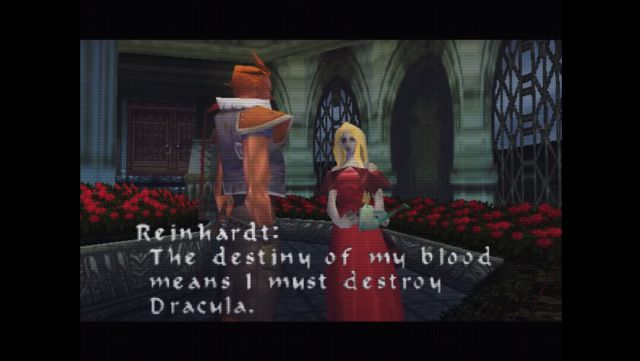
Carrie’s case, on the other hand, was practically the opposite. She was also linked to an ancient clan, the Belnades, that dated back precisely to Dracula’s Curse: like Sypha, a sorceress who could accompany – and relieve – Trevor Belmont if the player wanted it, Carrie mastered the magical arts, which allowed to counteract his lower physical strength with unlimited self-assisted firing projectiles, whose effectiveness was increased by holding the button to charge its power, working almost like the “easy” mode (technically there was an easy mode as such, but it interrupted the game in half, so it was not an advisable option). It also had rings for melee attacks if necessary, but playing with it required learning to move and maintain distances.
However, the contrast was not limited to the gameplay and extended to his interactions with the supporting players. Although the paths of Reinhardt and Carrie never crossed, the first third was identical for both and culminated in the Villa where most of the presentations took place, an occasion that the short and simple script took advantage of to outline the girl as a more assertive character and confident in his abilities. Kinship was also an important issue for her, but in her case the key did not lie so much in responsibility or blood ties as in those of affection, something that was discussed during the second half when the stories of both protagonists diverged differently. clearer to explore your doubts through both secondary and own antagonists. A light component, but enough to, together with its own levels, differentiate campaigns and incentivize replay.
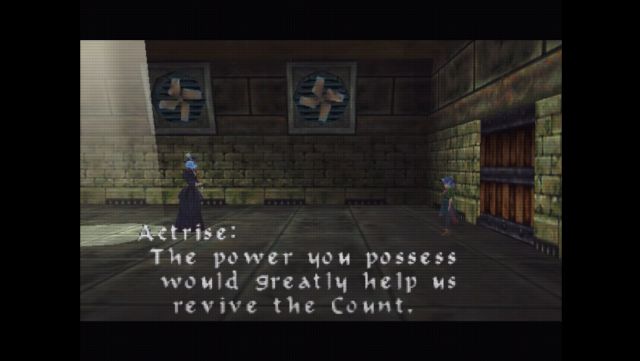
Open till dawn
Although before jumping so far ahead and delving into the aspects that prevent you from taking advantage of your potential, it is welcome to stop at the Villa and explain where that potential lies in the first place. Preceded by a couple of levels that tested orientation skills, habituation to the not always intuitive platform, and some unreliable collision detection bosses – although later the game did not benefit from a transformative upgrade, it did start out more lazy – this enclave, made up of a rather gloomy mansion and its surroundings, was one of the most memorable sections and one that best illustrated the possibilities of the jump to three dimensions for setting and exploration.
In a way not so different from the Spencer Mansion – here the reference to Resident Evil does seem intentional – the villa was distributed on two floors with several rooms distributed, some inaccessible until getting a key or returning from the garden the other way. Needless to say, the design was not as elaborate as in the Capcom title, as it represented a much smaller percentage of development, the third of nine levels (six common, three exclusive) that each character would have to overcome on their way to Dracula. . But paying attention was essential not only to figure out the route, but to solve the enigma posed by the dialogues of some NPCs and the influence that a time system that flowed from day to night continuously had on them – unlike the disruptive first attempt. from Simon’s Quest.
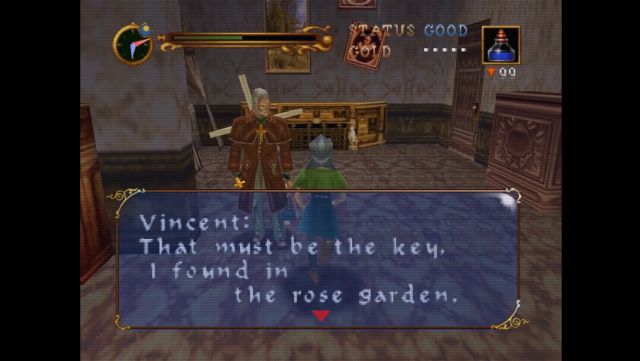
And it is that, although classic monsters such as skeletons, lizardmen or Medusa heads were not lacking, Castlevania 64 put some emphasis on vampires. These offered the toughest fights, were often presented in rather terrifying sequences — for the time, though they can still get some scares — and, of course, were more powerful by nightfall. It is something that could be used in our favor, waiting for dawn or using one of the cards that sped up time, and also functioned as an indicator against the clock if one caught us and transmitted the aforementioned vampirism: the immediate effects were the change of color on the skin, the cancellation of the main attack (whip or magic) and the use of the traditional pieces of meat to recover life. Although, on the other hand, we could take unlimited damage because in this state we were immortal.
A significant advantage, albeit of limited use because, if a purifying item is not used before the following midnight, the transformation will be completed and will result in the end of the game. This way of “punishing” the player for playing too safe was a fairly strong trend in the game. The purifiers themselves could be purchased in abundance from Renon, a lovable demon whose shop we had access to at various points in the game; However, if throughout the adventure we invested too much money in his services, in the end he revealed his true form and tried to take our soul. Similarly, while waiting or using the cards to speed up time served to smooth out some fights or open special doors, access to the final boss also depended on the global day counter. Only in haste would we discover Dracula’s best kept secret.
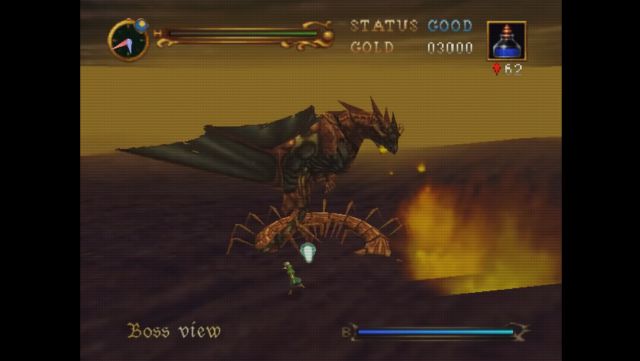
Unstable like nitroglycerin
After passing the Village and making our way towards the base of the castle through the first great divergence (Reinhardt crossed a mine full of spider women; Carrie, a sewer populated by lizardmen), the path of both heroes converged again to make another of the missions surely most remembered – for better and for worse – by everyone who had played it: locating and transporting from the upper floors to one of the lower ones a jar of nitroglycerin that exploded in case of jumping, attacking or being hit (idea similar to the one that, curiously, Resident Evil later used for its remake). On paper, the idea was interesting, since that tense and limited return made us face the design of rooms in a different way that minutes before we had kicked off without giving them greater importance. In practice, it also served to highlight some of the main drawbacks of the game.
Although the conditions did not include the impossibility of running, the game made us cross a succession of narrow walkways that, in some directional changes, were connected by platforms that descended under the weight of the protagonists. The key, therefore, was to pass at a certain speed – not necessarily running, but maintaining a constant gait – a task complicated by the fact that this maneuver was accompanied by a turn in the camera to look in the new direction. And the Castlevania 64 camera, unfortunately, was not among its virtues. With the side C buttons dedicated to secondary weapons and contextual actions such as picking up objects or opening doors, the player relied either on automatisms – something also applied to weapons – or on the use of the R button to center it behind the character and / or on enemies .
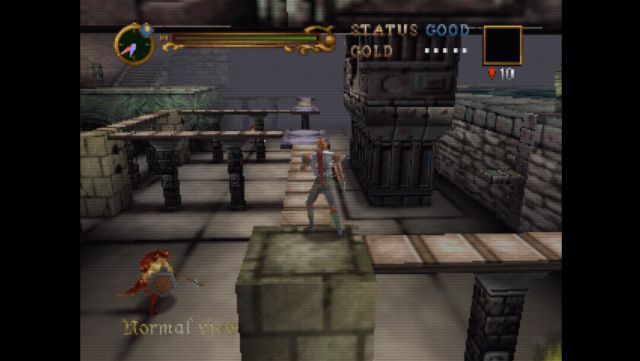
With practice and the precision of analogue – which did respond in an exemplary way as long as the character’s relationship to the camera did not change abruptly – this section was not actually that complicated, but it serves to illustrate a basic problem that Ailing both combat and platforming: In situations where it was important to keep moving, using R was counterproductive because the team phrased it more similarly to Resident Evil – where characters stood to aim – than to Ocarina of Time – where the pointed with Z allowed Link to keep going. This was something that could be mitigated to a certain degree by quickly pressing and releasing the button, but it was not as effective or accurate, and could cause additional problems if the system decided to aim based on proximity and turned dramatically to focus on an enemy. that was not even in view of the player.
Taking the ride back with nitroglycerin, completing it also involved passing statues that came to life, walking between large gears without being crushed with their teeth and dodging a biker skeleton that could thwart the trip almost at the finish line. If that was the case, it was time to repeat the entire section because another factor adding salt to the wound was its scattered distribution of save points. It is acceptable to clarify that this kind of distancing can have a beneficial effect by increasing tension. Resident Evil, once again, serves as an example by creating exploration loops around a small selection of save machines with limited uses, and effective modern examples are the Souls from From Software. On more than one occasion they can push towards uncomfortable situations, but their control tends to be much more reliable and the situations where we are exposed to instantaneous deaths due to a misstep are also much less frequent.
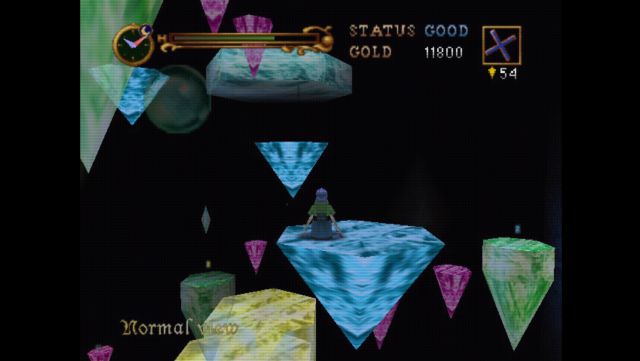
Black sheep with usable wool
The result was an often frustrating game, and rarely for the right reasons. At its launch it was harshly criticized by most of the press and users, who had come to play a work of the stature of Symphony of the Night a couple of years before. It is hardly debatable that this first attempt in three dimensions made waters in fundamental aspects, even if we ignore comparisons with other deliveries, and as a result it is usually counted among the black sheep of the saga. That said, there is also value in his successes, which unfortunately have not enjoyed the same kind of continuity and refinements that he did have the luxury of enjoying the 2D side despite also committing a few mistakes along the way.
In the same way that more recent games such as Deadly Premonition or the first NieR achieved cult status despite minor blemishes, among its setbacks Castlevania 64 left us a setting that still stands out among its contemporaries thanks to its gothic decor and the occasional macabre imagery. (we haven’t even talked about the statues that cry blood); a soundtrack with a more atmospheric cut, although without denying space to beautiful melodic pieces; a playable cocktail that is not always well resolved, but that at least tried to combine exploration, platforming and even some puzzles without abandoning itself to action and spectacle like other later 3D exponents; and ideas with still potential for the future such as the passage of time or vampirism. It is difficult to say in what proportion his triumphs and failures occur because the perception will vary from player to player, but it is undeniable that he has both, and the former deserve to be more remembered. Starting with Konami itself.
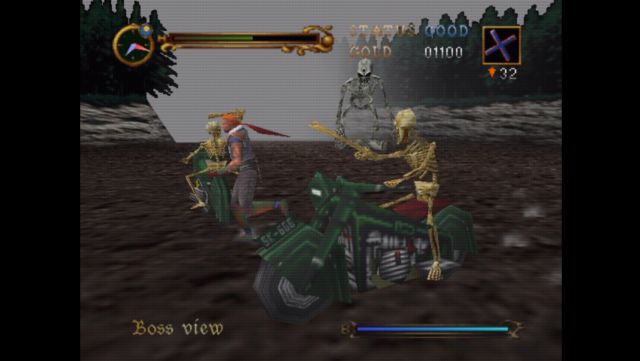
CONCLUSION
Already exceeding two decades since its launch, Castlevania 64 remains in the collective memory as one of the quintessential examples of an unsuccessful leap into three dimensions. A game with good ideas and bad executions that, for many, is still among the weakest that the long-lived Konami saga has given. However, while there is merit in its criticisms, there is also merit in some of the aspects that the study perhaps did not materialize in the most elegant way, but still result in an interesting experience, clearly differentiated from previous and later installments. Despite its relative linearity, Castlevania 64 offers considerable scale with significant exploration. And despite the limited graphics of Nintendo 64, the game manages to build a sinister atmosphere, with friendly and enemy encounters to remember. It deserves better treatment and, above all, a formula review that maintains its best practices while correcting the worst.
THE BEST
- The ambientation. Even today it is one of those games that ask to be played at night.
- Two protagonists with their own story arcs, skills, levels, and bosses.
- Mechanics such as vampirism or the passage of time, as well as some of its long-term effects.
- The soundtrack doesn’t have the classic Castlevania gait, but it does add to the atmosphere.
WORST
- The camera and enemy centering are not up to the task.
- The save point dosing penalizes compounding the problem above.
Good
It meets the expectations of what a good game is, has quality and does not present serious flaws, although it is missing elements that could have taken it to higher levels.
